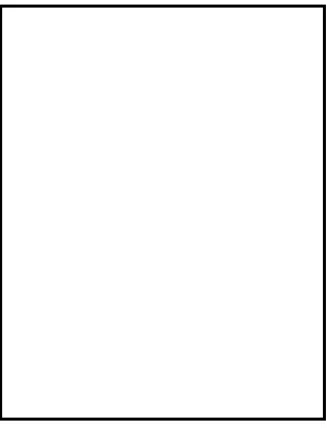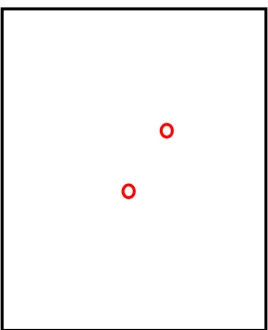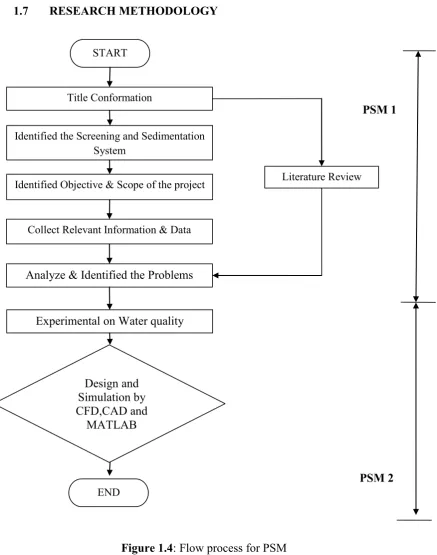DESIGN AND DEVELOP AN INTERGRATED SYSTEM FOR LAKE WATER TREATMENT AT UTeM’S LAKE – FILTRATION DEVICE AND DEBRIS
COLLECTION
THAQIF BIN HAT
SUPERVISOR DECLARATION
“I hereby declare that I have read this thesis and in my opinion this thesis is sufficient in terms of scope and quality for the award of the degree of
Bachelor of Mechanical Engineering (Automotive)”
Signature : ...
Supervisor :PM. IR. DR. ABDUL TALIB BIN DIN
DESIGN AND DEVELOP AN INTERGRATED SYSTEM FOR LAKE WATER TREATMENT AT UTeM’S LAKE – FILTRATION DEVICE AND DEBRIS
COLLECTION
THAQIF BIN HAT
This report is submitted in partial fulfillment of the requirements for the award Bachelor of Mechanical Engineering (Automotive)
Faculty of Mechanical Engineering Universiti Teknikal Malaysia Melaka
DECLARATION
“I hereby declare that the work in this thesis is my own except for summaries and quotations which have been duly acknowledged.”
Signature : ...
Author :PM. IR. DR. ABDUL TALIB BIN DIN
iii
DEDICATION
Especially for
Beloved mother and father
Hat Bin Arop
ACKNOWLEDGEMENT
v
ABSTRACT
ABSTRAK
vii
TABLE OF CONTENTS
CHAPTER CONTENT PAGES
DECLARATION
DEDICATION iii ii
ACKNOWLEDGEMENT iv
ABSTRACT v
ABSTRAK vi
TABLE OF CONTENTS vii
LIST OF TABLES ix
LIST OF FIGURES x
LIST OF APPENDICES xii
LIST OF ABBREVIATION AND SYMBOLS xiii
CHAPTER 1 INTRODUCTION
CHAPTER 2 LITERATURE REVIEW
CHAPTER CONTENT PAGES
CHAPTER 4 CONCEPT DESIGN AND ANALYSIS
4.1 INTRODUCTION 39
CHAPTER 5 RESULT AND DISCUSSION
ix
LIST OF TABLES
No. TITLE PAGE
Table 2.1 Typical information on the characteristics and
quantities of screenings removed from wastewater with coarse screens
10
Table 2.2 Typical information on the characteristics and
quantities of screenings removed from wastewater with various types of screens
11
Table 2.3 Advantages and disadvantages of various types of
bar screens
14
Table 3.1 Gantt chart for the 1st semester 24
Table 3.2 Gantt chart for the 2nd semester 25
Table 3.3 Quality Function Development (QFD) 31
Table 4.1 Sketch of the Project 40-41
Table 4.2 Comparison of Von Mises Stress between materials 45
Table 4.3 Comparison of Translation Displacement between
materials
46
Table 4.4 Result of Quality Function Development(QFD) 47
LIST OF FIGURES
No. TITLE PAGE
Figure 1.1 Map of UTeM’s lake 2
Figure 1.2 Typically the waste condition
(a) Jebat River (b) Putat River
4
Figure 1.3 Locations of machine along the lake 5
Figure 1.4 Flow process for PSM 6
Figure 2.1 General classifications for the types of screens 8
Figure 2.2 Typical mechanically-cleaned coarse screens
(a)chain driven (b)reciprocating rake
13
Figure 2.3 Typical microscreen 17
Figure 2.4 Typical rectangular sedimentation tanks 18
Figure 2.5 Typical circular sedimentation tanks 19
Figure 3.1 Methodology chart 23
Figure 3.2 Typically standard float valve 29
Figure 3.3 4 ypes of float balls
(a) cube (b) pyramid (c) cylinder (d) rectangular
29-30
Figure
3.4-3.15 Step For Run The CES EDUPACK Selection 32-37
Figure 4.1 Water Tank 41
Figure 4.2 Waste Tank 41
Figure 4.3 Submersible Pump 42
Figure 4.4 Waste Collector Tank 42
Figure 4.5 Sludge Tank 42
Figure 4.6 Sludge Tank Removal 42
Figure 4.7 Sludge Collector 43
Figure 4.8 Motor 43
Figure 4.9 Float Valve 43
Figure 4.10 Float Valve Tank 43
Figure 4.11 Final Design 44
Figure 5.1 Screening process 50
Figure 5.2 Screening process with waste 50
Figure 5.3 Sedimentation operation with sludge 52
Figure 5.4 Take the average reading size of sand 52
xi
LIST OF APPENDICES
No. TITLE PAGE
A Maps of Tasik UTeM 61
B Comparison Table 63
xiii
LIST OF ABBREVIATIONS AND SYMBOLS
UTeM - Universiti Teknikal Malaysia Melaka
FKM - Fakulti Kejuruteraan Mekanikal
(Faculty of Mechanical Engineering)
BOD - Biochemical Oxygen Demand
COD - Chemical Oxygen Demand
Pa - Pascal’s
DO - Dissolve Oxygen
CAD - Computer Aided Design
CFD - Computational Fluid Dynamic
MATLAB - Matrix laboratory
K - Kelvin
Ø - Diameter
ft - feet
ppm - Parts per million
Hg - Mercury
FAS - Ferrous ammonium
QFD - Quality Function Development
HoQ - House of Quality
SOTR - Standard Oxygen Transfer Rate
R - Rating
WR - Weighted Rating
1
CHAPTER 1
I
NTRODUCTION1.1 BACKGROUND
Water is the most valuable resource and humans need it for survival. One of the ways to obtain it is from lake beside of rain, lake and others. Lake has been played such an essential role in daily life since thousand years as an early location for settlement.
Throughout human history, lakes have served as important sources of drinking water, food and irrigation for crops. In the earlier days, peoples preferred to settle at the lake because it not only supply water for their domestic needs and agricultural purposes but also enabled them to move from place to place using boats or rafts as their transport.
Figure 1.1: Map of UTeM’s lake
1.2 OBJECTIVE
3
1.3 SCOPE
Make research for overall UTeM’s lake water based on analysis of water quality research made by UTeM Development Office especially in parameters of solid waste therapy and semi float.
1.4 PROBLEM STATEMENT
In this project, careful thought need to be given to several aspects. First of all is to design a suitable screening and sedimantation system composed base on biological oxygen demand (BOD) and chemical oxygen demand (COD) value.
Next, the level of BOD and COD in UTeM’s lake need to be calculated precisely so that a proper amount of oxygen can be supplied by the screening and sedimentation system. Figure 1.2 shows the typical waste condition.
(b)
Figure 1.2: Typical waste condition (a) Jebat River (b) Putat River
1.5 IDEA CONCEPT DESIGN
The UTeM’s lakes have 2 sides. There are lake A and B. In this project, a machine will be placed in the middle at the bottom of the lake for
26148.1m2
and
48076.8m2 respectively. This machines will be operated5
Figure 1.3: Locations of machine along the lake
1.6 REPORT OUTLINE
This project consist of two parts which are PSM 1 and PSM 2. PSM 1 consist of five parts which are introduction, literature review, methodology, concept design and conclusion.
1.7 RESEARCH METHODOLOGY
Figure 1.4: Flow process for PSM
START
Title Conformation
Identified the Screening and Sedimentation System
Identified Objective & Scope of the project
Collect Relevant Information & Data
Analyze & Identified the Problems
7 protects the downstream process from objects that could cause disturbance and maintenance issues. It is a device with openings, commonly of regular size, that is utilized to hold on large solids discovered in the influent wastewater to the treatment plant. The general purpose of screen is to get rid of huge objects such as rag, paper, plastics, metal and other debris. These objects if not get rid of, may harm the pumping and sludge removal equipment, thus creating risky plants operations and maintenance problems. Fine screens are sometimes utilized in place where greater remotion of solids is needed to protect equipment which may be more sensitive to solids such as membrane bioreactors.
incorporated approach has to be enforced.
2.1.1 Classification of Screens
Wastewater screenings are generally categorized into either coarse screening or fine screening. Both are used in preliminary treatment of waste water. Fine screens may also be utilized as an optional primary treatment process or for getting rid of extra organic solids from sludge streams prior to sludge processing. The principal applications for microscreens are to remove undissolved solids from secondary effluent and from stabilization-pond effluent.
Figure 2.1: General classification for the types of screens
Screening
cleaned Catenary Continuous belt
Fine screen 0.5 mm to 6
mm
Static
wedgewire Step Travelling band Drum Microscreens



